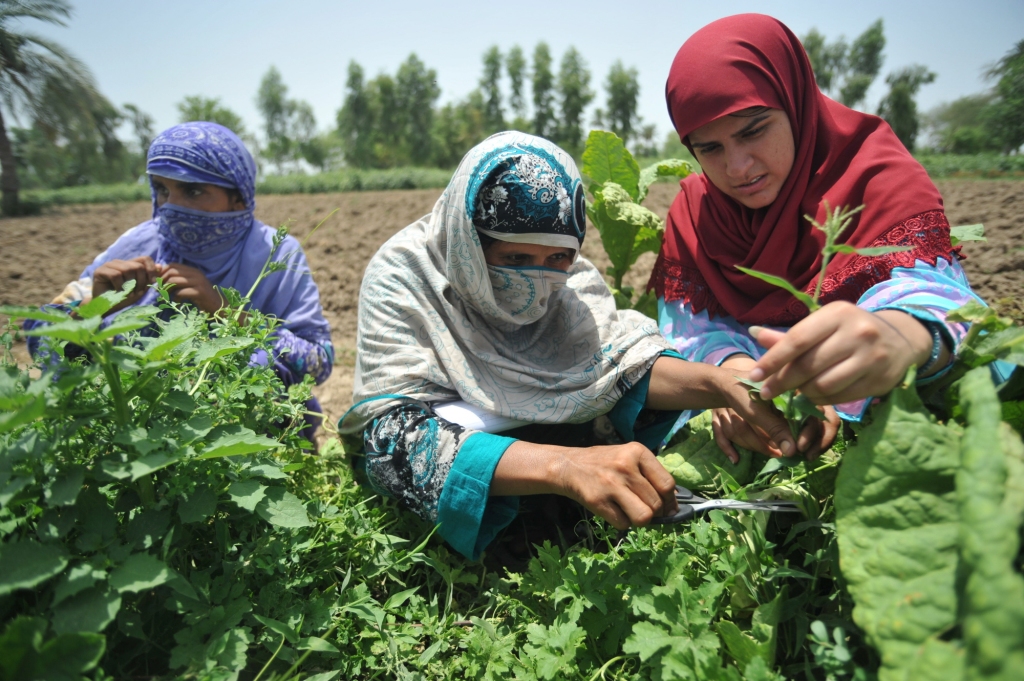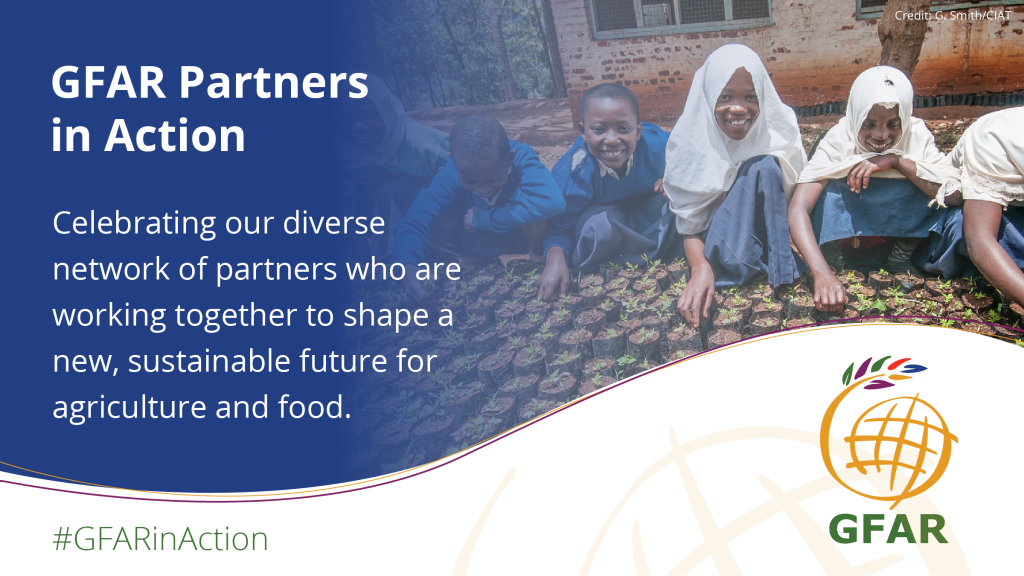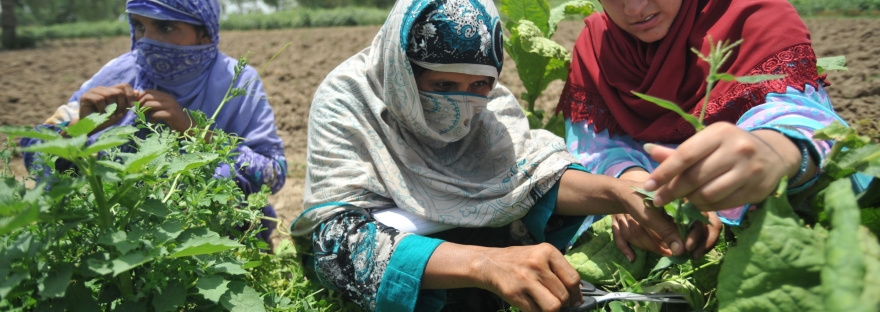Viviana Palmieri, Executive Secretary of FORAGRO speaks with GFAR’s Valeria Pesce about leading the Collective Action on Inclusive Digital Transformation of Agriculture, the challenges and opportunities facing farmers and how to ensure inclusivity is key.

Valeria: Why did FORAGRO propose a Collective Action on Inclusive Digital Agriculture and what is the importance for you of the “inclusive” dimension?
Viviana: Digital agriculture is an increasingly important topic for FORAGRO stakeholders, with discussions of how to overcome the constraints to take advantage of these promising technological options, without leaving anyone behind.
During 2019, FORAGRO organized a virtual consultation “Digital Agriculture and Inclusion – Priorities for the agricultural research, development and innovation agenda in Latin America and the Caribbean”. Its results and products (the technical note prepared as a base document and the summary of the results of the consultation as a document and an interactive infographic) provide inputs to continue advancing the positioning of the Forum in the renewal of agendas and agricultural research, development and innovation (RDI) systems, given the opportunities of digital farming. And this was before the pandemic, which has caused digital tools to acquire even greater relevance due to lockdowns and travel restrictions.
We saw the possibility of a Collective Action as an opportunity to raise awareness and promote multi-stakeholder analysis and joint actions on the implications of advances in digital agriculture (DA) for the agricultural RDI agenda and the implementation of the necessary capacities to take advantage of opportunities to increase productivity, sustainability and inclusion – mainly of family farmers and rural women.
The “inclusive” dimension is key, given that technologies for agriculture are almost never neutral, tending to favor producers that are in better position to take advantage of them. And, in the case of digital technologies, this situation is enhanced by the existing digital divide due to gaps in access, capacities and appropriate developments for small and medium farmers.
Valeria: Judging from your past research and consultations, what are 3-4 major challenges that farmers face in adopting digital technologies?
Viviana: We avoid using the term “adoption” because it conveys a very linear, top-down vision of the innovation process: something developed by an elite who knows what’s best, should be adopted by the farmers.
The key challenges that farmers – particularly small-scale farmers – face for taking advantage of digital technologies to improve their production processes include:
- The gap in access (connectivity, quality, and costs) between different countries and segments of the population, including between rural and urban communities.
- The significant gaps in capacities and skills to take advantage of digital tools in the agricultural sector.
- The lack of farmers’ voice in the design and governance of DA technologies and farmers’ low negotiating power on conditions of use.
- The need for appropriate digital developments for different types of producers in different regions and contexts, as well as a methodological framework to guide the development of technologies that do not enhance the profound inequities in the region.
Valeria: FORAGRO has participated in international initiatives on agricultural data (CIARD, GODAN). What do you think is the most challenging data aspect of digital agriculture, from the farmers’ perspective?
Viviana: In general, there seems to be an issue of trust between farmers and digital technology providers on how data is treated. Most digital technologies use and generate a huge amount of data, which is sent from devices to servers to clouds and is processed at several different steps. Farmers don’t know what happens to their data, there is opacity and no clear legal framework for how data is treated in the DA value chain. So, probably the most challenging data aspects have to do with data ownership and privacy as well as business sensitivity and economic value.
Another issue is farmers’ access to data. Besides data often being expensive, the format and granularity of available data are not always suitable for the needs of all farmers, and this hinders the possibility of converting data into actionable knowledge to improve decision-making.
At the same time, when access to data is mediated by DA tools, the algorithms that translate data into farming operations are opaque, and farmers often feel they don’t have full control of the decision-making process
Valeria: In addition to the research/consultative phase to identify needs and constraints, will the Collective Action also devise best practices and develop capacities?
Viviana: Yes, besides the needs assessment, the Collective Action will strengthen capacities and improve the access and availability of options and best practices. All these products will be codesigned with different actors in the agriculture innovation system, particularly farmer organizations. At the end, we’ll develop an online toolkit designed around the needs of farmers, to collect best practices and capacity development material.
Valeria: The business models and best practices discussions will build on the requirements and constraints as expressed by farmers. In your vision, will the Collective Action address all these challenges? Or how will it deal with challenges that cannot be directly tackled by actors involved in the Collective Action?
Viviana: No, the Collective Action and its partners could not possibly address all the existing challenges. The focus of capacity development will depend both on the priorities identified in the consultations and on what the partners involved can deliver. But the core of the action will be making farmers more aware of what they can expect from DA and more capable of exercising their collective power, negotiating better business models, and participating in technology design and governance.
As for what is outside the power of the partners, the Action will work to increase awareness of all the challenges and advocate for improvement of the conditions and policies that limit the effective and inclusive use of digital tools to enhance agriculture performance and allow positive social, environmental and economic impacts.
Viviana Palmieri
Viviana Palmieri is an Agronomist, with a MSc in Crop Production Systems from the Tropical Agricultural Research and Higher Education Center (CATIE). She is currently a Technical Specialist in Agricultural Innovation and Technology and the Coordinator of IICA’s cross-cutting area on Innovation and Technology, as well as Executive Secretary of FORAGRO
Valeria Pesce
Valeria Pesce has worked for more than 15 years in the areas of knowledge management, data infrastructures, data sharing, data standardization and more recently data policies, especially concerning agri-food data. She was already Project Manager at the Global Forum on Agricultural Research and Innovation (GFAR) for 13 years and had consultancies with CTA and the World Bank on digital agriculture policies. She joined GFAR again in 2021 and is responsible for the Collective Action on Inclusive Digital Transformation of Agriculture.

This blog is part of the GFAR Partners in Action series, celebrating the achievements of our diverse network of partners who are working together to shape a new, sustainable future for agriculture and food. Each month we will be showcasing stories related to a key theme in agri-food research and innovation. The theme for April is ‘Digital transformation of agriculture’.
Join the conversation in the comments below or share this article on social media using #GFARinAction.




